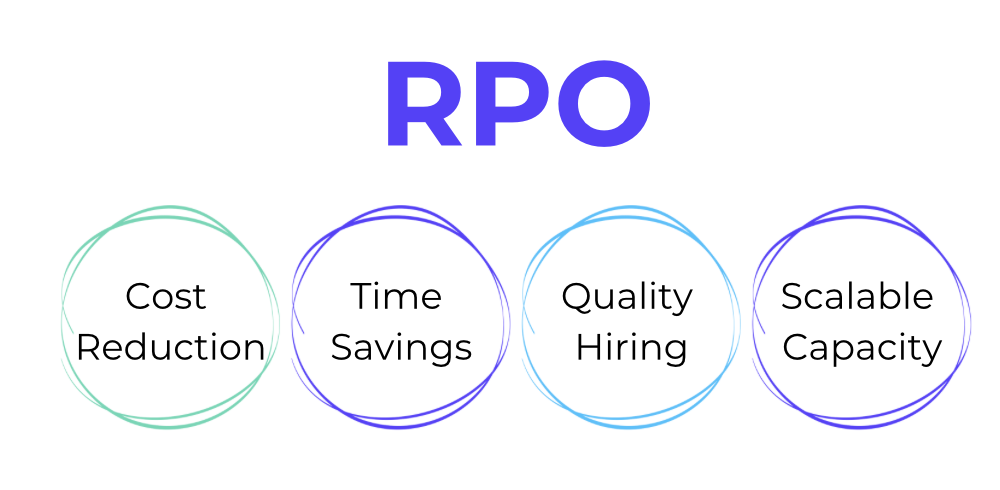Getting it right in the area of software quality assurance (QA) is just as important as creating the software itself. These QA testing best practices may seem like a no-brainer, but you’d be surprised at how often they go overlooked.
You shouldn’t make the same mistake. Instead, follow these practices.
Table of Contents
Embrace Detailed Test Planning
Before you jump into the testing phase, you must carry out intricate planning and define the complete test plan. A test plan is a blueprint that outlines the actions that will happen during the testing process. These test plans have a clearly defined structure established by the IEEE 829, the industry standard for software and system testing.
Every test plan should consist of the following items:
- Test plan identifier
- References
- Introduction
- Test items
- Software risk issues
- Features to be tested
- Features not to be tested
- Approach
- Item pass/fail criteria
- Suspension criteria
- Resumption requirements
- Test deliverables
- Remaining test tasks
- Environmental needs
- Staffing and training needs
- Responsibilities
- Schedule
- Planning risks and contingencies
- Approvals
- Glossary
Having this plan provides a complete understanding of the project scope, strategy, resources, limitations, deadlines, and risks, guiding the QA testing process to successful completion. More than just a document for testers, a detailed test plan is a critical communication tool between different project stakeholders, including developers, project managers, clients, and even business analysts.
This plan enables everyone to participate, coordinate and understand the state of the project at any given point of time, and see how it aligns with their expectations and objectives.
Test Early and Often
Testing early and often is the core of the “shift-left” approach in QA. This early detection helps in fixing issues before they escalate into bigger problems.
Fun fact: The shift-left testing approach was coined by Larry Smith back in 2001 and remains relevant to this day.
“Shift-left testing is how I refer to a better way of integrating the QA and development parts of a software project. By linking these two functions at lower levels of management, you can expand your testing program while reducing manpower and equipment needs — sometimes by as much as an order of magnitude.”, Larry explains.
Recent findings confirm this, stating that it can cost up to 6x more to fix a bug found during implementation than to fix one identified early, during design.
The practice of continuous and early testing brings quality assurance to the forefront of product development. Instead of considering QA testing as a separate and final phase, it encourages development and QA teams to work in tandem from the inception of the product. This practice not only speeds up the development process but also ensures that any issue identified is not a deep-rooted one, making it easier and cost-friendly to resolve.
It sounds good in theory, but here’s how it works in practice:
- Identify different types of testing methods suitable for each development stage. For instance, unit tests during code build stage, functional testing and integration testing when two modules are to be merged, and so on.
- Involve QA analysts early in the development process, even at the stage of requirement gathering and design phase. This ensures a thorough understanding of the product and clear testing guidelines.
- Perform frequent code reviews and execute test cases that verify the feature functionality immediately after the development phase.
Remember, effective implementation of this approach requires a cultural shift in your organization and strong collaboration between your developers and QA teams. You can make this transition smoother by seeking experienced professionals’ guidance.
Go Agile
Agile is a project management strategy typically used in the software development process where solutions evolve through collaborative efforts. It encourages flexible responses to changes and promotes continuous improvement in both product and processes.
In the context of QA, agile focuses on integrating testing throughout the development cycle instead of conducting testing after the development process. An agile testing approach puts the accent on:
- Short, Repeated Test Cycles: Agile testing uses a series of short, repeated test cycles called ‘sprints’. Each sprint focuses on a specific portion of the product for development and testing.
- Constant User Feedback: Agile invites constant feedback from the end-user to ensure the product meets their needs and expectations.
- Efficient Resource Allocation: Agile allows testers and developers to promptly address concerns and systematically allocate resources where they’re most needed.
What many fail to realize is that being agile isn’t merely about the methodologies — it’s a mindset that prioritizes adaptability, constant user engagement, and continuous learning and improvement.
Combine Manual and Automated Testing
Integrating both manual and automated testing brings together the best of both worlds. The reasoning behind this is simple — some tests are more suited to automation, while others are best performed manually.
For instance, automated testing can handle repetitive tasks and lengthy regression tests quickly and efficiently, while manual testing allows for a human touch, creativity, and an ability to interact with the software as a user would. Unit tests, load tests, and performance tests can usually be automated. On the other hand, usability and exploratory tests are better suited to manual checks.
By combining the two, you will witness many benefits, including:
- Cost and Time Efficiency: By addressing lengthy and repetitive tests through automation, organizations can save time and resources, which can then be dedicated to manual testing processes that require a human touch.
- Increased Test Accuracy: Automated tests can run exactly the same operations each time, eliminating the risk of human error. Meanwhile, manual testing lets us catch bugs that automated tests might miss due to the real human interaction.
- Boosted Coverage: With the combination of both automated and manual testing methods, you can increase your test coverage and software quality.
It’s crucial to balance your testing efforts and not to rely heavily on one approach over the other. Use each method where they excel and where they make the most sense in your given context.
Make Communication a Priority
One factor that often doesn’t get the attention it deserves in quality assurance testing is communication. Communication is crucial in clarifying project goals, managing expectations and facilitating swift resolution of issues.
It is a two-way process that involves shaping a clear message and successfully conveying it to the receiver. This might mean writing comprehensible bug reports, providing precise instructions for reproducing a defect, or keeping all stakeholders informed about testing progress and potential issues.
To ensure everything is communicated clearly, you should:
- Hold regular meetings to clarify expectations, discuss progress, and address any potential issues. These discussions help align the team and make the QA testing process smoother.
- Document everything from test cases and expected outcomes to bug reports and final test results. Clear and concise documentation minimizes misunderstandings and enables effective communication.
- Encourage open and transparent communication between team members and stakeholders. Transparency helps set realistic expectations, enables quick responses to issues, and fosters a culture of trust.
In turn, this will help you:
- Boost Efficiency: With clear channels of communication, issues and concerns are addressed promptly, leading to decreased downtime.
- Align Your Team: Regular and open communication ensures that everyone is on the same page, reducing misunderstandings and misalignment.
- Improve Quality: Good communication enables efficient problem-solving, leading to better software quality.
Create the Best Working Environment for Your QA Team
Creating an empowering and effective environment for your QA team is crucial to get the best out of them. As a matter of fact, highly engaged workplaces witness 41% lower absenteeism, 40% fewer quality issues, and 21% higher profitability.
It goes beyond providing a comfortable physical setting, especially in the era of remote work. It’s about fostering a work culture where every team member is valued and their contribution is recognized. Remember, a happy tester is an effective tester!
To ensure your testers are thriving in the workplace, you should:
- Foster a culture of respect and transparency: Every team member should feel comfortable sharing their ideas and opinions without fear of judgment or repercussions. Regular meetings and open channels of communication enhance transparency.
- Invest in continuous learning: Provide opportunities for skill development and learning. This could be in the form of workshops, training programs or industry conferences. Make efforts to keep your team updated with the latest trends and tools in QA testing.
Create a balanced workload: Ensure your testing schedule is realistic and takes into account the team’s capacity. Overworking your team can lead to burnout, which is detrimental to both the project and the team’s morale.
There are many types of QA testing, regression testing being one of the most important ones. These tests should be done after modifying a system to check if the changes have updated the system and have not affected existing functionalities.
Regression tests help in:
- Identifying any defects introduced due to changes in the system
- Ensuring consistent performance
- Rooting out almost all the unexpected bugs, ultimately ensuring better-quality software
- Cutting down on costs associated with fixing bugs later in the development process
Regression testing can either be carried out manually or through automated testing tools. Although automated regression testing requires an initial investment, it plays a crucial part when testing large applications and can significantly improve the efficiency of the process.
To ensure optimum QA, capitalize on the power of QA testing tools available. Start by determining what you need to test — a website, a mobile application, or an enterprise-grade system? Based on the requirements, identify the type of testing tools needed.
For instance, functional testing tools test the user interface (UI), while performance testing tools help identify system bottlenecks. Use tools like Selenium for web application testing, Jmeter for performance testing, or Appium for mobile application testing.
Before you opt for a tool, understand your project’s scope and requirements. Here are some key points to consider:
- The tool’s compatibility with your project’s technology stack
- If the tool supports the types of testing required for the project like functional, performance, or security testing
- Your budget and the tool’s pricing model
- Customer support and learning resources provided by the tool
Integrating the chosen tool into your workflow is the next major step. Key integrations could include:
- Integration with your continuous integration/continuous delivery (CI/CD) pipeline
- Integration with your bug tracking system
- Integration with other testing tools used in the project
When used the right way, these tools can significantly enhance the efficiency and effectiveness of your QA testing activities. Some of their prime benefits include:
- Reduced time and effort for repetitive tasks by automation
- In-depth reporting and analysis of test results
- Inspection of the application at various levels such as units, modules, interfaces, and systems
- Ease of collaboration and communication within the team
Incorporate Security-Driven Tests
There’s a cyberattack every 39 seconds — the importance of conducting security-driven tests cannot be overstated. This practice ensures that your software is bulletproof against any potential threats, thereby fortifying it at every development stage.
Security-driven tests comprise techniques such as penetration testing, static application security testing (SAST), and dynamic application security testing (DAST). This suite of checks identifies, exposes, and rectifies security vulnerabilities within a system before deployment.
By incorporating security-driven tests into your QA practices, you can reap several benefits:
- Enhanced Security: These tests detect and fix security vulnerabilities, strengthening your software against future threats.
- Improved Trustworthiness: When users know your software has undergone rigorous security testing, their trust in your product increases.
- Cost Savings: Detecting and fixing security issues earlier in the development cycle is more cost-effective than tackling them after the product launch.
Consider Outsourcing
Many software development teams are finding value in outsourcing QA testing. By relying on external QA experts, you not only gain access to their well-honed skills, but also their state-of-the-art testing tools.
There are several reasons why you might consider outsourcing QA testing:
- Expertise: Outsourcing companies are experts in testing. They bring experience and industry insights that can enhance your software’s quality.
- Cost-effective: By outsourcing, you can save on the cost of hiring and training staff, as well as maintaining testing tools and infrastructure.
- Efficiency: Outsourcing allows you to focus on your core competencies. The testing company manages the testing operations, freeing up your team to work on other important tasks.
- Scalability: Based on your business needs, you can scale outsourcing. This flexibility can be especially beneficial for firms with fluctuating business cycles.
When outsourcing QA testing, it’s vital to select a reliable partner. Make sure they understand your business requirements and have the capabilities to meet your objectives.
QA Testing Best Practices: Key Takeaways
Consistently implementing best practices in QA testing is key to escalating software quality and overall business success. It’s all about being proactive and strategic in your approach to QA testing, setting the stage for software excellence.
QA Testing Best Practices FAQs
Why is QA testing important in software development?
QA testing plays an indispensable role in software development, serving as a critical line of defense against potential bugs and issues. It ensures that the software performs optimally and functions accurately according to design specifications.
This helps improve user experience, maintain credibility, and minimizes the risk of failure. Moreover, QA testing uncovers flaws and areas for improvement, helping developers create a resilient, efficient, and high-quality product that meets client expectations and user needs.







